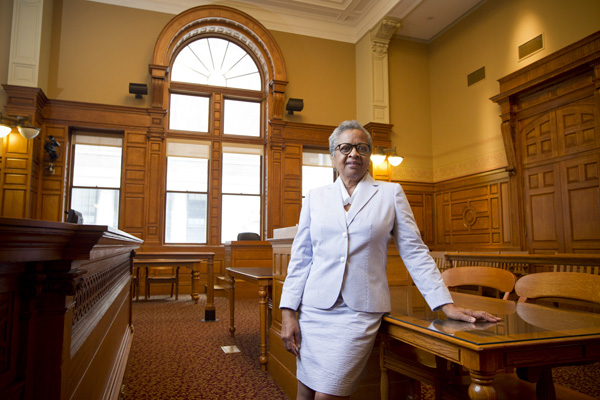3Qs: Trayvon Martin, George Zimmerman, and social justice

Last weekend, a jury acquitted neighborhood watch volunteer George Zimmerman of all charges in the shooting death of 17-year-old Trayvon Martin. The case has sparked a national discussion about race and gun laws since the incident occurred last year, and protests have broken out since the verdict was read. We asked law professor Margaret Burnham, founder of the School of Law’s Civil Rights and Restorative Justice Project, which conducts research on anti-civil rights violence in the United States and other miscarriages of justice of that era, to examine the outcome and the case’s broader impact.
What factors do you think contributed to the jury’s not guilty verdict in this case?
You cannot point a finger at any one aspect of the trial and say, “this is where the prosecutors failed, or that is where the law was misapplied.” That is what leaves many people bewildered by the protests of the verdict. We saw a combination of problems that added up to an unreliable and unfair result. In the first place, Zimmerman’s suspicions about the teenager were faulty and underscore that racial profiling, always humiliating, can also be fatal. The local police should have apprehended Zimmerman immediately and conducted an exhaustive investigation. Those initial days after a crime are critical, for that is when investigators are able to gather the most information And of course the “stand your ground” law effectively turned the 17-year-old into the aggressor in the eyes of the jury. These factors certainly paved the way for a verdict that was unfair even if it was consistent with the evidence available to the jurors.
Though the criminal case against George Zimmerman is over, are there mechanisms in place for a broader pursuit of social justice in regard to Martin’s death?
The case raises, once again, longstanding issues about the role of race in the administration of our criminal justice system. It offers the opportunity to reject laws like Florida’s, to revisit issues of profiling and the stop-and-frisk policies that foster it, and, as President Obama suggested, to renew initiatives for gun control. That’s the real value of the case at this point.
That said, of course the Justice Department will investigate this case, consider the role race played in the matter, and determine whether it constitutes a prosecutable hate crime. But the federal laws on this subject are quite narrow in scope and may not provide a clear opportunity for additional prosecution, unless of course there is some evidence that has not been made public. In short, although the current Justice Department has a very good record of prosecuting hate crimes, the evidence here may not meet the high burden of proof that a prosecutor is going to need. Does that mean Zimmerman did nothing wrong? Not at all. What it means is that it is difficult to correct the effects of racially biased decision-making in a particular criminal case, where, and rightly so, the defendant is entitled to the benefit of the doubt.
How does this case compare with those investigated by law students through the Civil Rights and Restorative Justice Project, a Northeastern initiative that probes long-overlooked cases from the 1930s and 1940s?
The cases are unfortunately painfully familiar. In both situations there has clearly been an unredressed wrong, an injustice that has fallen between the cracks of the legal apparatus. That’s really the focus of our project—examining these cases that occurred some 70 years ago. Of course in those cold cases it’s far easier to identify what went wrong in the case: the state failed to investigate a lynching, for example, or an all-white jury wrongfully acquitted the defendant, as in the Emmett Till case. The Zimmerman case is clearly not that, but—as in so many of our cold cases—race is the determining factor. Race explains the results, which is not to say any single actor bore animus toward Trayvon Martin, but to recognize that had he not been a black male he would likely be alive today. That makes the Zimmerman case painfully and eerily familiar to those of us who study civil rights legal history.





